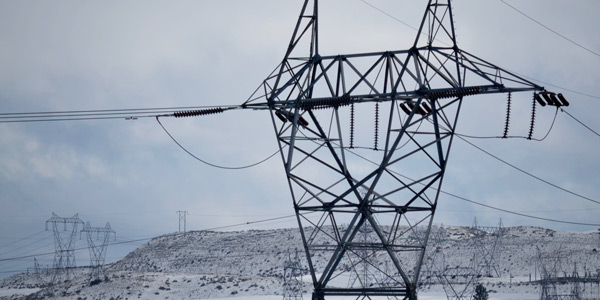By Robert Mullin
The Western Area Power Administration has selected a route for the TransWest Express transmission project, a proposed 730-mile, extra-high-voltage DC line designed to deliver large volumes of renewable energy into the desert Southwest.
The announcement comes a month after the U.S. Interior Department’s approval of the project — which would cross about 440 miles of Bureau of Land Management land — after eight years of environmental studies.

The proposed 600-kV line would run from south-central Wyoming, passing through Colorado and Utah and ending at the Marketplace Hub substation about 25 miles south of Las Vegas. That hub functions as a major wheeling point for transmitting power from the interior West into Southern California.
WAPA’s decision will enable project developer TransWest Express to proceed with design and engineering activities, as well as position the agency “to better evaluate its options for participation in or financing of the project,” the agency said in a statement.
The federal power marketing administration is supporting the project through its Transmission Infrastructure Program, which allows transmission developers to “leverage” the agency’s development experience and provides eligible infrastructure projects with access to federal financing.
“Collaboration between WAPA and energy developers is critical to developing infrastructure capable of meeting our nation’s growing energy needs while minimizing environmental impacts,” WAPA Administrator Mark A. Gabriel said. “This decision and comprehensive study provides the foundation to further the project’s development.”
TransWest Express is a subsidiary of the Denver-based Anschutz Corp., a privately held company with extensive investments in energy and real estate.
The project will boast 3,000 MW of bidirectional capacity when completed. The line’s primary function will be to allow loads in Arizona, California and Nevada to tap the output of planned wind resources in Wyoming.
Project specifications include two 200-acre AC/DC converter stations at each terminating point, a fiber optic network communications system and two 600-acre ground electrode facilities.
The project is expected to cost about $3 billion and take three years to complete after the start of construction. WAPA and BLM were the lead agencies in preparing the environmental impact statement for the project, which is still subject to approval from additional state and federal regulatory bodies.



